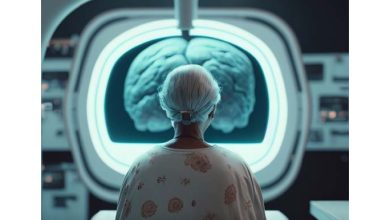What holds back radiologists’ productivity

Radiologists’ productivity barriers and tools that can help to overcome them
Managing the imaging backlog from the pandemic and the growing volumes from the rapid development in cancer care will affect all radiology professionals. Luckily, technology and IT tools are also advancing and here
to help radiologists tackle these higher volumes and increased complexity, and to become more productive while also reducing the risk of burnout. To adopt the right technologies that truly unlock the full potential of a diagnostic system, one needs to identify what are the current barriers today? In a nationwide survey by California- based Canopy Partners, radiology executives representing 67 organisations in 24 states were asked about the barriers hindering radiologists from being productive. They found that the biggest challenges were related to workflow, including image sharing, remote reading, interface upgrades, the radiologists’ communication, and access to prior exams. They especially highlighted the need for efficient workflows and the importance of having one standardised user interface in order to reach a state of flow.
To provide more hands-on advice on how to achieve efficient workflows and feel productive in daily work by overcoming barriers like these through the use of new technology and diagnostic IT tools, Spectra decided to
conduct our survey.
Let’s dig deeper into the areas in which radiologists experience the most challenges that negatively impact their performance.
1. Workflow management and case distribution
2. Oncology image review/reading
3. General image review/reading
4. Multidisciplinary tumour boards,
remote work, and collaboration
5. Access to advanced diagnostic tools
6. Reporting and result distribution
Workflow management and case distribution
Without a doubt, the biggest challenge in this area is that radiologists often get interrupted and need to spend a lot of time finding the case and rearranging the images again in order to continue reporting. This was followed by the fact that it is hard to pick the right case to report due to insufficient information about when the report must be completed, and the lack of automatic case allocation based on speciality. Being interrupted and the hassle of
finding the case again, rearranging images, and getting back to an efficient state of reading are considered significant barriers to feeling productive, according to the survey. Diagnostic application should support seamless
and dedicated workflow capabilities for handling interrupted workflows, such as easily being able to go back/forward and resume image presentations.
How to tackle this challenge The struggle of picking the right case to report on due to insufficient information about when the report must be completed and the lack of automatic, speciality-based case allocation can be
solved with well-integrated workflow orchestration software. Rules-based workload allocation will enable the right exam to be distributed to the right radiologist more easily, based on a set of criteria and tailored for
each department’s needs. More over, an analytics dashboard can provide an overview of the exam distribution, the status of SLAs, and the current performance.
Oncology image review/reading
When it comes to reviewing oncology cases, the biggest challenge reported is getting a good patient overview and disease progression due to the lack of support for efficiently handling multiple priors and follow-ups. Secondly, radiologists feel that it is too time- consuming to adhere to and follow tumour evaluation guidelines and assessment rules, such as RECIST, PI-RADS, iRECIST, and PERCIST. The third biggest barrier is the lack of relevant clinical measurement tools for lesions.
How to tackle this challenge
When reviewing oncology cases, streamlined and smart reporting forms and structured reporting templates— together with consolidated information in one application—can efficiently manage multiple priors as needed for
patient overview when doing follow- ups.
Built-in structured reporting that can be customised to the disease or subarea facilitates adherence to reporting guidelines, which was reported as another productivity barrier. When it comes to structured reporting, integrated tools such as those for assisting in tracking lesion progression over time play an important role. Some lesion tracking tools allow for a semi-automatic population of image measurements into the reports and a structured comparison of lesions over time, which can significantly speed up oncology case reviews and help to tackle the third biggest barrier—the lack of relevant clinical measurement tools for lesions.
General image review/reading
Looking instead at factors related to general image review, the survey responses were much more evenly spread. The top factors selected were that the radiologists experience too many context switches to other systems due to not having access to relevant EMR data in the diagnostic application, that the system generally is too slow and almost a tie between poor display protocols and that the system is not easy to use.
How to tackle this challenge
To overcome the main barrier of having too many context switches to other systems due to not having direct access to relevant EMR data, the diagnostic application should offer an optimised diagnostic context. It needs to provide the right information at the right time. This is enabled by an efficient exchange of data between the diagnostic system and the EMR. An essential first step is to ensure context synchronisation and single sign-on, which will result in significant time savings.
Multidisciplinary tumour boards, remote work, and collaboration
The radiology experts and opinion leaders have articulated the increasing prevalence of MDTs and collaboration across disciplines as a growing challenge. These meetings are not only time consuming to conduct, but
also to prepare and to follow up on. Within this area, the two highest- ranking factors hindering radiologistsfrom feeling productive was the lack of access to reports and images from other specialist areas such as pathology
and cardiology, closely followed by the lack of built-in support for preparing MDTs in conjunction with the daily case review. Thirdly, radiologists lack integrated functionality for following up on cases after the meeting.
How to tackle this challenge
To truly improve collaboration across disciplines and in conjunction with MDTs, support for integrated diagnostics needs to be adopted. Utilising an enterprise imaging system that includes both pathology and cardiology in the
same platform as radiology makes it easy to access each other’s images and reports—before, during, and after the MDT. It is important that the diagnostic imaging system offers built-in support to facilitate the steadily growing MDT preparation, follow-up, and presentation ork. Enablers for remote reading are important for remote participation in MDTs as well as for ensuring efficient collaboration regardless of physical workplace. In both these scenarios, the system needs to guarantee high performance and secure connections and ways of sharing patient data. One common facilitator is to use a single diagnostic application that offers embedded tools for efficient communication with colleagues and at the same time a high-security connection to the diagnostic imaging system, such as a VPN or client-based certificates.
To simplify the implementation of a comprehensive enterprise imaging system, a subscription-based pricing model normally facilitates an expansion to other departments as well as managing the growth in the number of
exams.
Access to advanced diagnostic tools
The main barriers reported by the radiologists when it comes to access to advanced diagnostic tools were the complete lack of advanced functionality for specific tasks, followed by too many context switches between applications due to a lack of integrations, and the fact that the integration with these advanced tools is not seamless.
How to tackle this challenge
Using a single diagnostic application for diagnostics, workflow, reporting, and advanced tools is an important enabler to overcome the two main barriers reported in this area: the complete lack of advanced functionality for specific tasks and too many context switches between applications. This also facilitates remote work, since you don’t have to switch applications or workstations. Instead, you get access to all clinical tools through one user interface, where all patient data is synchronised, without the need to log in to several systems.
The third biggest barrier was poor integration with third-party applications. To improve workflow and reading efficiency, the diagnostic application should be able to offer a comprehensive portfolio of a combination of native
tools and tightly integrated third-party tools, hence minimising the need to switch to separate applications. This is particularly important for radiologists handling high volumes such as breast radiologists, who need quick access to, for example, ABUS/ABVS and breast mpMRI.
Reporting and result distribution
When it comes to reporting and results distribution, the top three barriers selected by the radiologists were the lack of structured reporting tools, the lack of functionality to compare findings in the current exam with priors, and
poor speech recognition software and language detection.
How to tackle this challenge
The lack of structured reporting tools was the top challenge reported by the radiologists. Support for structured reporting templates together with supporting tools such as assistance for tracking lesions over time will be very
helpful to increase productivity and enhance the workflow. To tackle the issue of poor speech recognition software, having a single diagnostic application for diagnostics, workflow, reporting, and advanced tools will help. So-called PACS-based reporting is often perceived as a way of streamlining the reporting workflows and is something we see being increasingly adopted, in particular in Europe. Streamlined and smart reporting that offers one application for image review and report¬ing will address the challenge of too many context switches. It is now time to create a game plan to make sure you will be able to manage the growing volumes in the post-COVID era and the increasing demands from cancer care. By studying these barriers, we hope to help you in the process of identifying your own bottlenecks and the areas where new technologies are likely to have the biggest impact.
Source: Sectra Imaging IT Solutions




